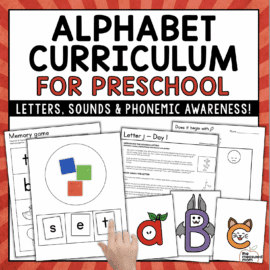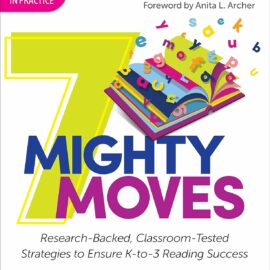
Do you do a lot of sensory play at your house? The kind where you give your child a container with a filler (like rice, dry pasta, shredded paper, etc.) and some toys and let him have some hands- on fun? I’m kind of new to sensory play, myself. I didn’t do much of it until I started blogging a little over a year ago… and saw what everyone else was up to!
Since my kids don’t go to preschool, I feel like it’s my job to make sure they get sensory play at home. One thing I’ve seen a lot of lately is something called an “invitation to play.” It’s simply a group of carefully selected materials arranged in an appealing way… so that kids can have some open-ended fun and learn at the same time.

While I’d love to learn more about invitations to play – and start creating my own – this probably wasn’t one. Rather than let my boys take the lead in determining what to do with the materials, I talked to them about building a zoo with a base of beans and rice. They were excited about it.
As for setting out materials in an appealing way, I just didn’t get to it. Our newborn (5 weeks old when we did this activity) was still asleep in her carseat, so I took the chance to pull out the bin, filler, and our toy animals. That’s as fancy as I can get these days!
After the activity I thought about what I might have set out for them… were I a bit more prepared and a little less distracted!
Possible materials for a Zoo Invitation to Play:
a) a bin with filler (such as beans/rice, dry pasta, birdseed, etc.)
b) toy zoo animals
c) toy fencing and other materials to create divisions (craft sticks, rulers, etc.)
d) construction paper, cardboard, scissors, and tape to create plants and structures within the zoo
d) small containers and items that could be used as food bins/food for the animals (beads, gems, buttons, dry beans, cereal, etc.)
e) small pieces of paper and writing utensils (to label the exhibits)
f) colored felt to serve as grass or water
Of course, you would leave it up to the children to decide which of these materials to use, and how.

I knew that expecting all three of my boys to do this activity together (without fighting) would be asking the impossible. So I gave my just-turned-Two a box of dry oats, some toy animals, and some cups. He was thrilled! “(Mommy give oats – ME!”)

The older boys got to work building their zoo. As they worked, I observed that…
a) This was an opportunity to learn to work together and resolve conflict. When my Three and Five disagreed about how to set up the zoo (and my Three started to cry and grouch), I slowed them down and helped them make a compromise.
b) This provided opportunity for sorting animals. This was a chance for my Three to sort animals that live in a zoo and those that don’t. He left out the octopus, for example, but made a special farm area where the cow, sheep, and pig stayed (do you have an area for farm animals at your zoo?). He put a cat and dog in the zoo, too, but they were “just visiting to see the animals.”

c) My Five engaged in problem solving when he wanted to create a tree for the monkeys. He was determined to have a tree where one could actually sit. After assembling the individual pieces (see above) he figured out how to tape them together while keeping the tape hidden.
d) This was also a lesson in overcoming perfectionism –not that my Five grasped that lesson, but it’s one we’re working on! The tree did not turn out exactly as he wanted it, but through my gentle coaching he was able to keep playing without completely falling apart. (Any parents of perfectionists have any tips for me?)

e) The boys had practice being resourceful — when they saw a need for something, they went to get the materials they wanted. My Three was interested in feeding the animals, so he headed to our playroom for some of our toy food. These are going to be some very full animals!
So there you have it. A simple activity for a day that you’re stuck inside due to nasty winter weather or a dreary rain. You’d be amazed at how much fun kids can have while creating and learning with sensory play — no screen required!

Alphabet Curriculum for Preschool
$29.00
Our curriculum includes lessons for teaching both upper and lowercase letter names and sounds. You’ll get three lessons per letter, built-in review, simple handwriting practice, rhyming, syllable counting, phonemic awareness, and a whole lot more!





Leave a Comment